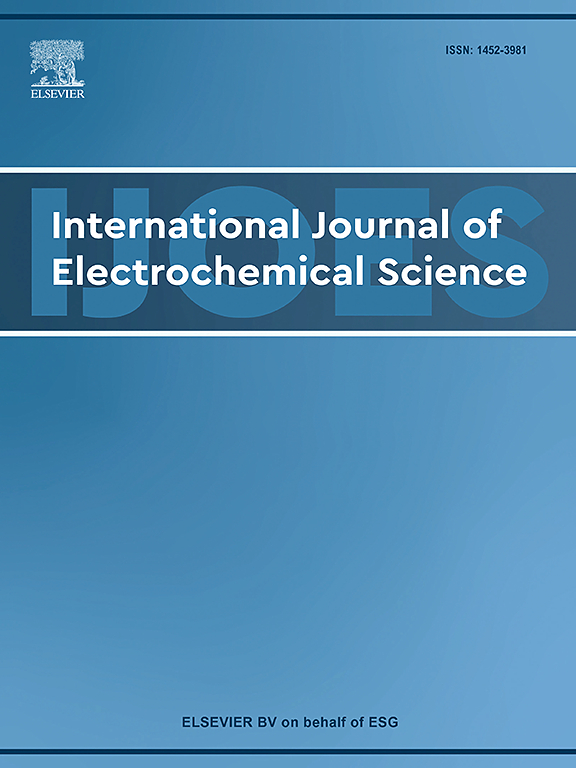Recent advances in photoelectrochemical detection of hydrogen sulfide
IF 1.3
4区 化学
Q4 ELECTROCHEMISTRY
International Journal of Electrochemical Science
Pub Date : 2025-04-26
DOI:10.1016/j.ijoes.2025.101046
引用次数: 0
Abstract
Hydrogen sulfide (H2S), as a biologically significant gaseous signaling molecule and environmental pollutant, has garnered extensive attention due to its crucial roles in various physiological processes and environmental systems. Photoelectrochemical (PEC) sensing has emerged as a promising analytical strategy for H2S detection owing to its high sensitivity, excellent selectivity, and minimal background interference, achieved through effectively coupling specific analyte recognition events with photoinduced electrochemical signals. This review systematically summarizes recent advances in PEC sensing technologies for H2S detection, categorized into three main strategies: (i) PEC sensors based on the intrinsic hole-scavenging capability of H2S; (ii) PEC platforms constructed via the in situ generation of metal sulfides (such as CdS, Bi2S3, Ag2S, and CuxS); and (iii) PEC sensors incorporating small organic molecular probes specifically responsive to H2S. Detailed discussions include detection principles, sensor configurations, material components, and analytical performance of various PEC sensing systems. Finally, perspectives are provided regarding future opportunities and challenges, including the exploration of novel metal sulfide semiconductors, development of advanced single-atom catalysts for precise recognition of H2S, and further optimization of multifunctional organic PEC probes to extend practical applications in environmental monitoring, biomedical diagnostics, and food safety analyses.
硫化氢光电化学检测研究进展
硫化氢(H2S)作为一种具有重要生物学意义的气体信号分子和环境污染物,因其在各种生理过程和环境系统中的重要作用而受到广泛关注。光电化学(PEC)传感通过将特定的分析物识别事件与光致电化学信号有效地耦合在一起,具有高灵敏度、优异的选择性和最小的背景干扰,已成为一种很有前途的H2S检测分析策略。本文系统总结了用于H2S检测的PEC传感技术的最新进展,分为三种主要策略:(i)基于H2S固有孔洞清除能力的PEC传感器;(ii)通过原位生成金属硫化物(如CdS、Bi2S3、Ag2S和CuxS)构建的PEC平台;(iii) PEC传感器包含对H2S有特殊响应的小有机分子探针。详细讨论包括检测原理,传感器配置,材料组成,以及各种PEC传感系统的分析性能。最后,展望了未来的机遇和挑战,包括探索新型金属硫化物半导体,开发先进的单原子催化剂来精确识别H2S,以及进一步优化多功能有机PEC探针,以扩展在环境监测,生物医学诊断和食品安全分析中的实际应用。
本文章由计算机程序翻译,如有差异,请以英文原文为准。
求助全文
约1分钟内获得全文
求助全文
来源期刊
CiteScore
3.00
自引率
20.00%
发文量
714
审稿时长
2.6 months
期刊介绍:
International Journal of Electrochemical Science is a peer-reviewed, open access journal that publishes original research articles, short communications as well as review articles in all areas of electrochemistry: Scope - Theoretical and Computational Electrochemistry - Processes on Electrodes - Electroanalytical Chemistry and Sensor Science - Corrosion - Electrochemical Energy Conversion and Storage - Electrochemical Engineering - Coatings - Electrochemical Synthesis - Bioelectrochemistry - Molecular Electrochemistry

 求助内容:
求助内容: 应助结果提醒方式:
应助结果提醒方式:


